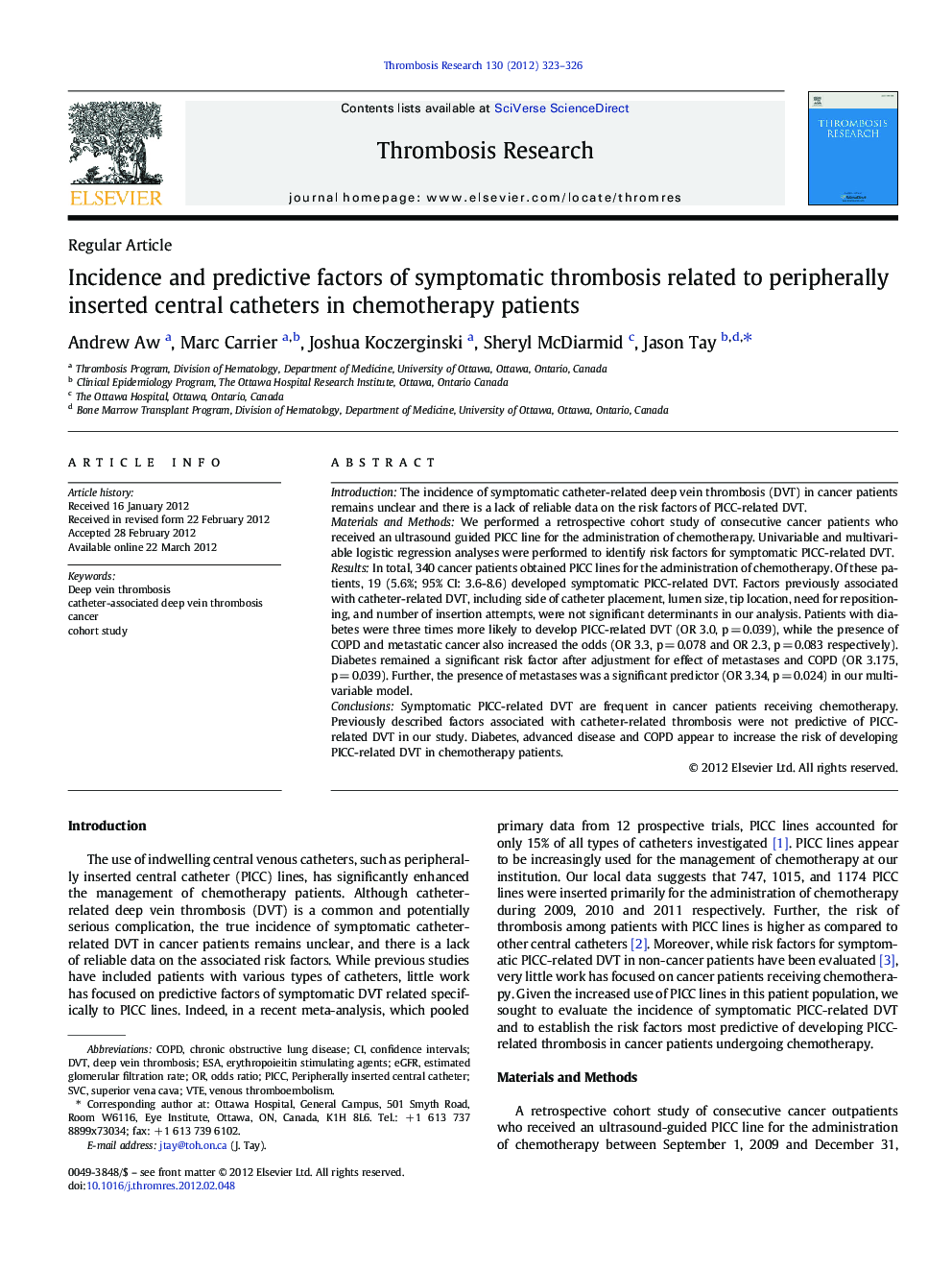| Article ID | Journal | Published Year | Pages | File Type |
|---|---|---|---|---|
| 3028255 | Thrombosis Research | 2012 | 4 Pages |
IntroductionThe incidence of symptomatic catheter-related deep vein thrombosis (DVT) in cancer patients remains unclear and there is a lack of reliable data on the risk factors of PICC-related DVT.Materials and MethodsWe performed a retrospective cohort study of consecutive cancer patients who received an ultrasound guided PICC line for the administration of chemotherapy. Univariable and multivariable logistic regression analyses were performed to identify risk factors for symptomatic PICC-related DVT.ResultsIn total, 340 cancer patients obtained PICC lines for the administration of chemotherapy. Of these patients, 19 (5.6%; 95% CI: 3.6-8.6) developed symptomatic PICC-related DVT. Factors previously associated with catheter-related DVT, including side of catheter placement, lumen size, tip location, need for repositioning, and number of insertion attempts, were not significant determinants in our analysis. Patients with diabetes were three times more likely to develop PICC-related DVT (OR 3.0, p = 0.039), while the presence of COPD and metastatic cancer also increased the odds (OR 3.3, p = 0.078 and OR 2.3, p = 0.083 respectively). Diabetes remained a significant risk factor after adjustment for effect of metastases and COPD (OR 3.175, p = 0.039). Further, the presence of metastases was a significant predictor (OR 3.34, p = 0.024) in our multivariable model.ConclusionsSymptomatic PICC-related DVT are frequent in cancer patients receiving chemotherapy. Previously described factors associated with catheter-related thrombosis were not predictive of PICC-related DVT in our study. Diabetes, advanced disease and COPD appear to increase the risk of developing PICC-related DVT in chemotherapy patients.
